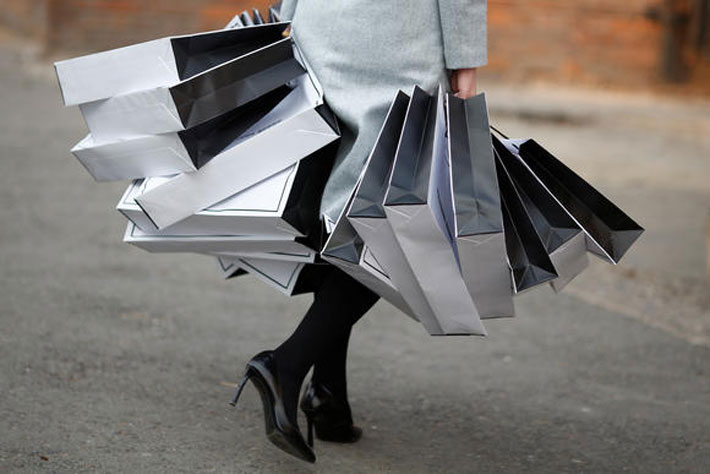Chinese casualwear labels are adapting in the face of competition from global fast fashion groups such as Uniqlo and Zara.

The likes of Heilan Home, Semir and Metersbonwe are changing what and where they sell.
FT Confidential Research brand popularity data shows that some consumers are responding to this shift. Significant legacy challenges remain but sportswear brand Li-Ning is a demonstration of Chinese retail's capacity for making the tough changes necessary for survival.
Follow the customer online . . .
An increased online presence has been important to this resurgence. Casualwear brands were slow to respond to the rise of ecommerce but are now following their customers. Our survey of 1,000 urban consumers found 32.8 per cent said they preferred to buy clothing online, more than physical shopping malls or department stores (see chart).
The online sales of Wenzhou-based Semir grew 50 per cent year-on-year in the first half of 2017 and now account for nearly a quarter of its total sales. For menswear label Heilan Home online accounts for just 5 per cent of its total sales but this has doubled in just two years.
Offline brands are winning back ground lost to online clothing labels by working with ecommerce platforms such as Alibaba and JD.com. These two dominate online casualwear sales - 74.3 per cent of consumers said they preferred to shop on Alibaba's Taobao or Tmall compared with just 2.6 per cent who said they shopped on standalone brand platforms (see chart).
. . . and into the malls
Chinese casualwear brands have also made important changes outside the virtual world. Their bricks-and-mortar strategy has been marked by a shift to shopping malls from street-level stores. Malls were the second most popular channel overall for buying casualwear, and the most popular among our highest income survey group.
These brands are following their global competitors into the malls. They have traditionally maintained huge sales networks at street level, running thousands of small, often franchised stores throughout China's city tiers. Semir alone operates or has franchised 8,000 stores in China and plans to open more than 300 in malls by the end of this year. In comparison, Uniqlo operates fewer than 2,000 stores worldwide.
Metersbonwe, headquartered in Shanghai, has abandoned a previous bricks-and-mortar makeover by closing flagship stores on Beijing and Shanghai's most famous shopping streets in favour of mall shops, including opening 10 throughout Wanda-operated malls on a single day in November.
The look of the stores themselves is changing. Gone are bright lights and overstocked shelving, and layout is no longer an afterthought. Heilan Home now boasts the kind of warm lighting and low-priced minimalism which has done so well for Japan's Muji. The company has also collaborated with Beijing-based menswear designer Xander Zhou, the first Chinese designer to show at Men's Fashion Week in London, on an exclusive line.
Our brand survey showed Heilan Home extending its lead among male consumers (see chart) while Semir has made gains among female shoppers, even if Uniqlo still dominates in that category. Notably, the popularity of Heilan Home and Metersbonwe has surged among high-income consumers, with their preference for shopping malls for buying clothing.
Tackling the past
The success of these transformations is not guaranteed. Relying on JD.com and Alibaba for sales can be risky as the two online rivals slug it out for market share. After a number of domestic brands, including Semir and Heilan Home, closed their outlets on JD.com in September, Alibaba denied reports it had pressured them into doing so. Shenwan Hongyuan Securities, a domestic brokerage, estimates the closure of Semir's JD.com channel will affect about Rmb500m in sales, equivalent to 4.6 per cent of 2016's total.
This revamp can also only go so far while domestic labels have legacy issues to tackle. These problems are reflected in share prices which have badly underperformed this year (see chart).
Competing with fast fashion groups such as Uniqlo requires much better supply chains. Uniqlo, Zara and H&M built their success on their ability to combine data gathering with supply chain control, allowing them to get products from the drawing board on to shelves within weeks. Uniqlo intends to cut its design-to-delivery supply chain to just 13 days to better compete with Zara.
Chinese companies have limited control of their supply chains. They distribute via often sprawling sales networks, making timely data collection and inventory management far more complicated. They are showing appetite for change, though. Semir has increased the frequency of its product meetings with distributors from four to eight times a year, and plans to increase this to 12 times in 2018.
But Li-Ning shows Chinese retail reinvention can be done. After years of losses, the biggest name in Chinese sportswear returned to profitability in 2015 and its shares are up nearly 30 per cent this year after taking tough action to cut its distribution network and address the costs of overexpansion.
Source: asia.nikkei.com
